How Do You Accidentally End Up Running a Pet Cemetery?
Shera Danese-Falk knows.
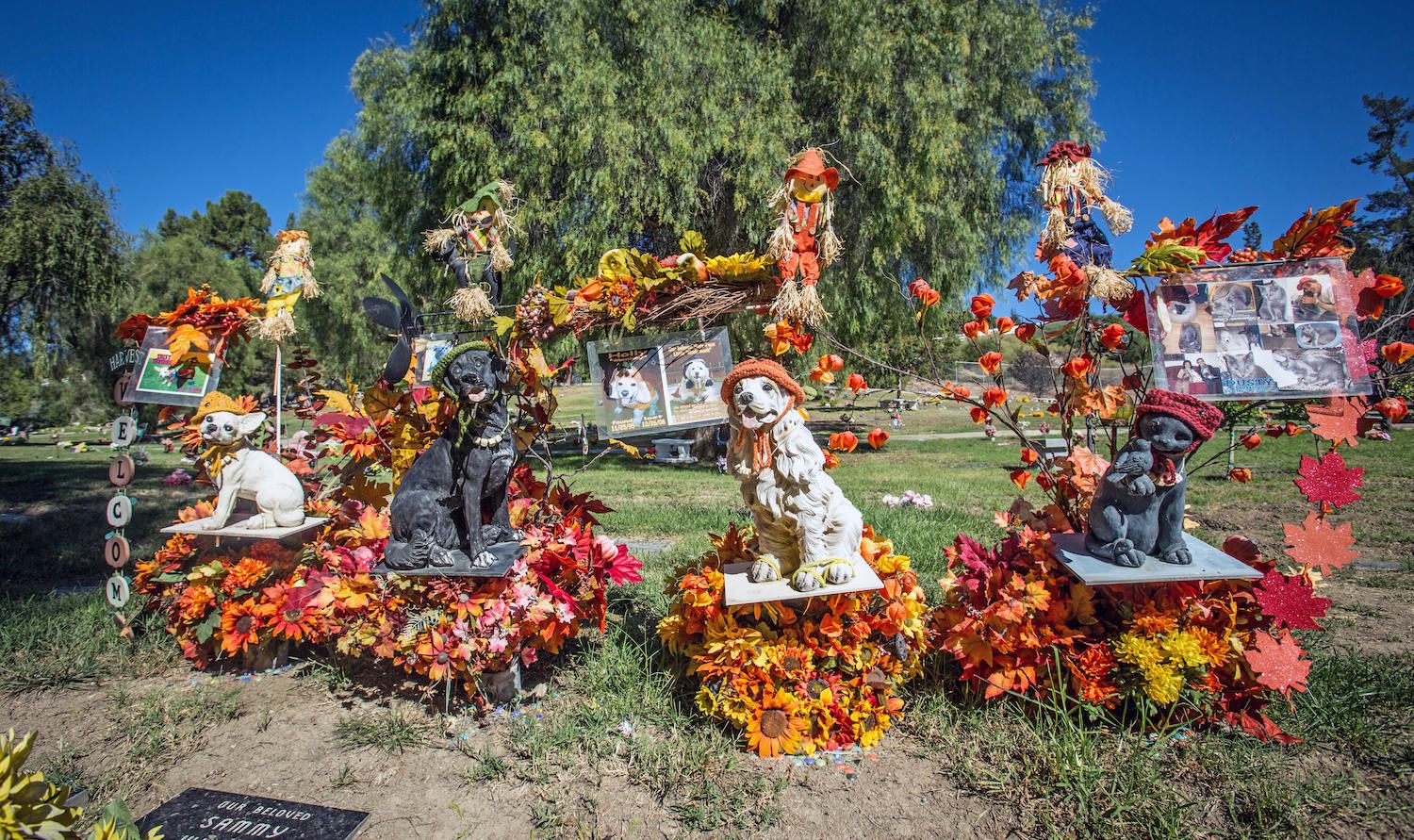
Shera Danese-Falk, the glamorous 69-year-old who runs the Los Angeles Pet Memorial Park, is running behind schedule. Pets don’t die on the hour, plus the office is closed on Sundays, so Mondays tend to be slammed. Two couples wait to speak with her in the small front office; the women wear large, dark sunglasses, the men are wan. The office is short-staffed and they only have a couple of employees to begin with, which means Danese-Falk is tasked with power-walking each set of these bereaved owners around the 10-acre property herself, even though she has a bad knee, which she let go untreated for too long because she was being optimistic.
Among the mourners is an older man wearing a waxed jacket and a flat cap. While his pet is being “processed” in the crematorium—the pet that was, just moments earlier, swaddled in a leopard-print blanket and placed gently in a wicker basket—he stands at the top of the hill and surveys the landscape of weeping willows, pepper trees, and tiny gravestones framed with fake flowers. A man in a uniform quietly digs little holes in the ground.
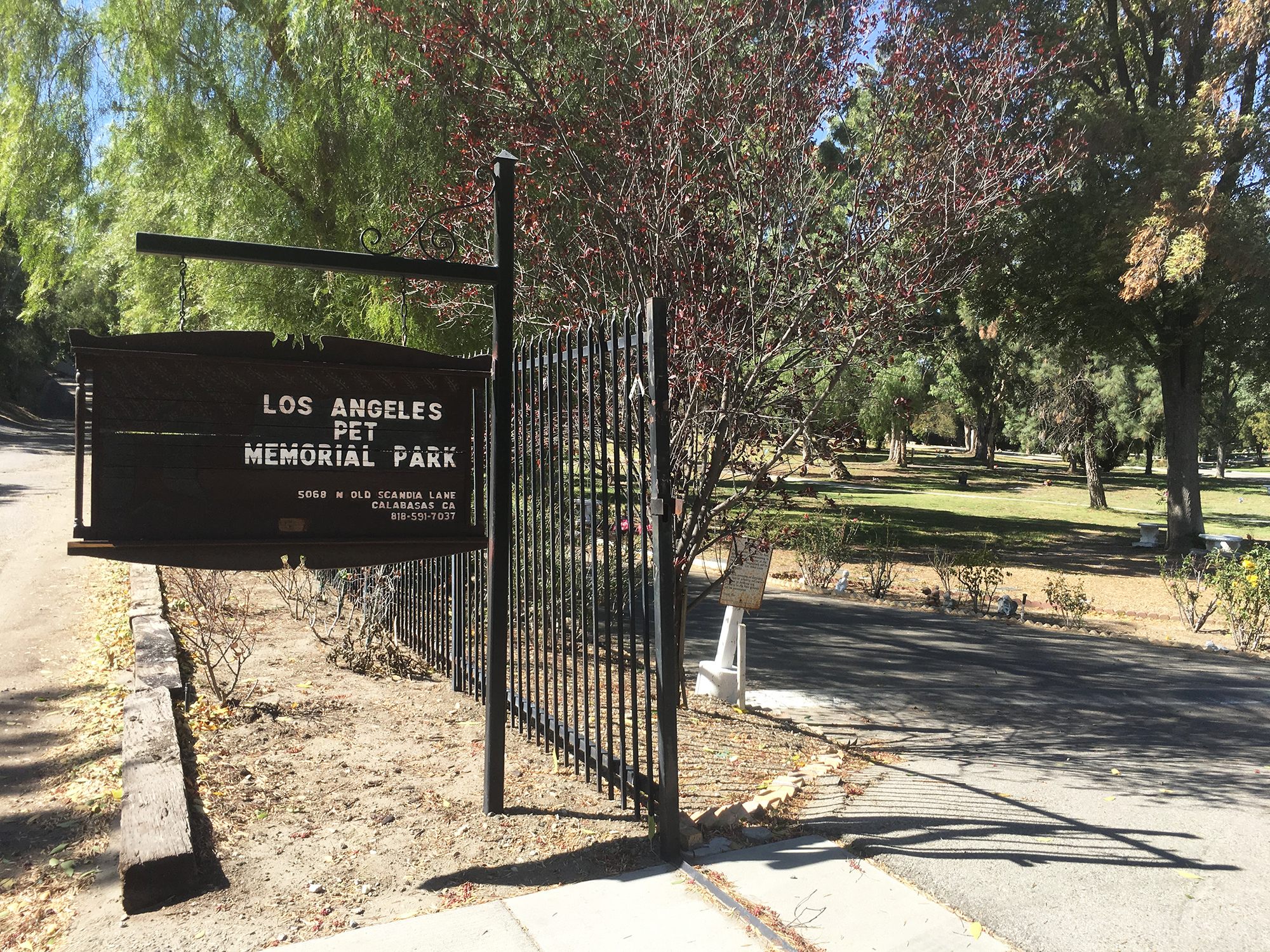
The Los Angeles Pet Memorial Park is the country’s second-largest pet cemetery (after Hartsdale in New York) and its most glam, home to all manner of celebrity pet and show animal, from silent-film legend Rudolph Valentino’s beloved Doberman Pinscher, Kabar; to one of the MGM lions, buried alongside its best friend, a cat; to Hopalong Cassidy’s horse. Danese-Falk also hails from Hollywood; she’s a retired actress and the widow of Peter Falk, best known for his role as Lieutenant Columbo in the epic television series Columbo, to whom she was married for 33 years.
What’s a woman like that doing in a place like this, you might ask. Well, it all started two decades ago, when her dentist told her about the place—actually, he told her about a rival place, which she first toured and found wanting—and she bought enough plots to bury 22 dogs. “I’ll have them in my life,” she says of her mindset at the time. While that may sound a little over the top, she’s since buried 13, has two others that are cremated and ready to be interred, and has seven currently living at home. Do the math: 22 exactly.

Danese-Falk decorated her pets’ plot with a big sun statue and little yellow rose trees. “My husband never went to the cemetery; he wouldn’t go,” she says. But one day, she made him drive over with her. He turned around, hugged her, and thanked her for bringing him there; finally, he understood. “They’re my kids,” she says, gesturing to the headstone of a dog named Petey Falk Jr. Each of the pets Danese-Falk owns now has special needs; one’s blind, one has congestive heart failure, one’s underbite is so severe it can barely eat. To hear her tell it, she didn’t go looking for her pets; each found her in a unique and fated way. As a child, before she knew how to express her love, she’d scoop her goldfish out of the tank and kiss it while it squirmed.
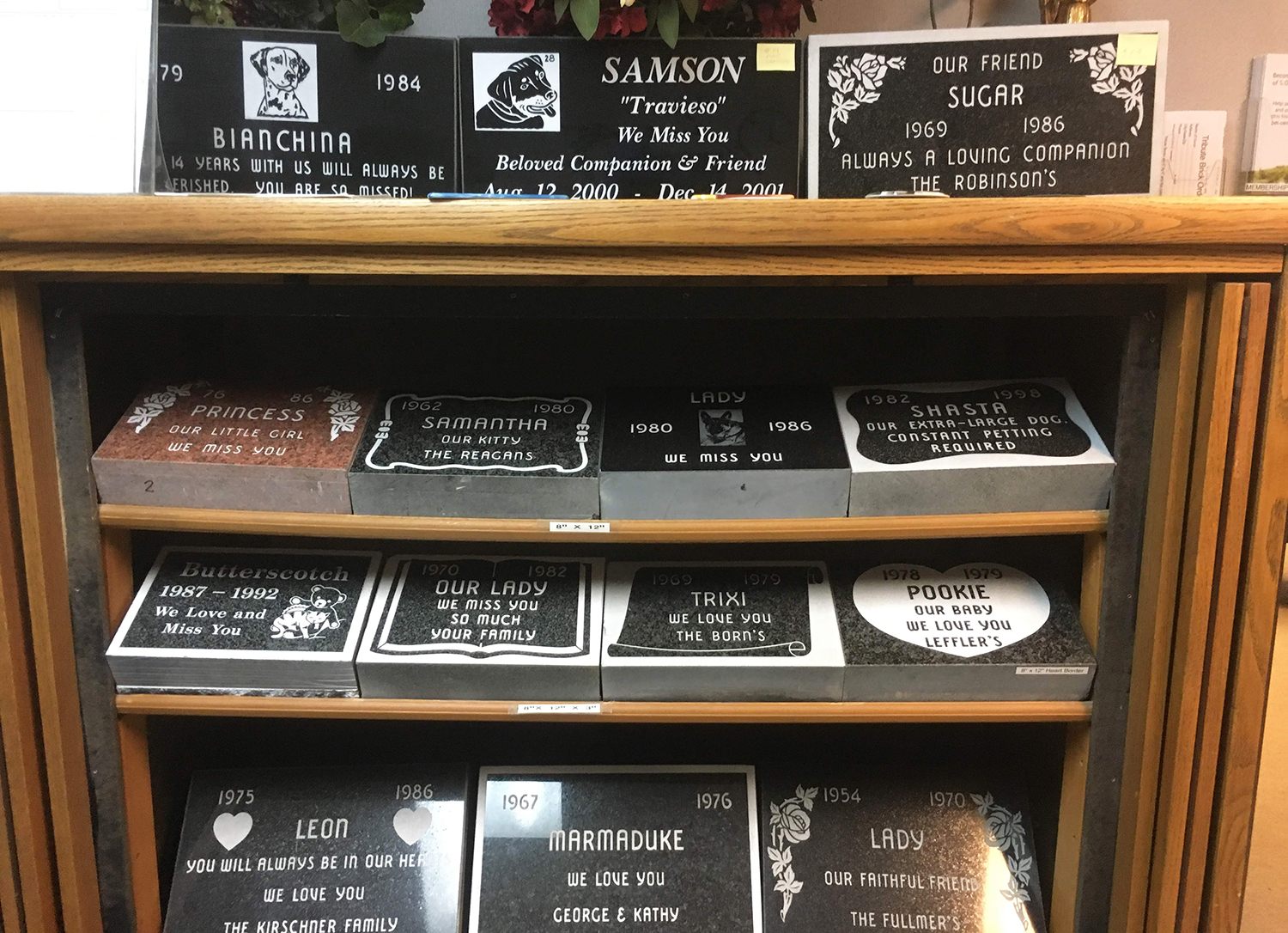
All that to say, some time after buying 22 plots, she joined the board. About a year and a half ago, the park needed a manager. “The board just appointed me at a meeting I didn’t go to,” she says, laughing. “That’s what you get for not showing up.” It’s a bizarre story, but Danese-Falk is quirky and spirited—when we spoke on the phone before I visited, the first thing she said was, “You ever have someone make you laugh so hard you pee your pants?”—and, somehow, you can imagine her saying, “Okay, sure, I’ll run the pet cemetery.”

Running the pet cemetery is a big operation. For one, her staff does pickups, 24-7, to Antelope Valley or the desert, as far as the client is willing to pay for them to go. And while that seems strange—if you live in the middle of nowhere, why not just bury your pet on your abundant land?—it makes some sense. “This park will be here for a long, long time,” she says. It was conceived of as a protected, permanent place where no new owner can dig up or destroy or pave over your pet’s remains. For another, there are about a hundred customized offerings; your bird can be cremated and placed in a three-inch metal urn ($25), your cat can be buried in a pink satin-lined casket with a pink satin pillow inside ($428), your hedgehog can get a dedicated bench ($5,000 donation to the park, plus materials). Plus, they operate a mausoleum, built in 1929, and the on-site crematorium. I imagined it’d all be darkly funny—wealthy Angelenos spoiling their pets, forever and ever—but there’s something terribly earnest, even moving about the whole operation. “Burying your pet is a luxury,” she admits. “We’re lucky to be able to do it.”
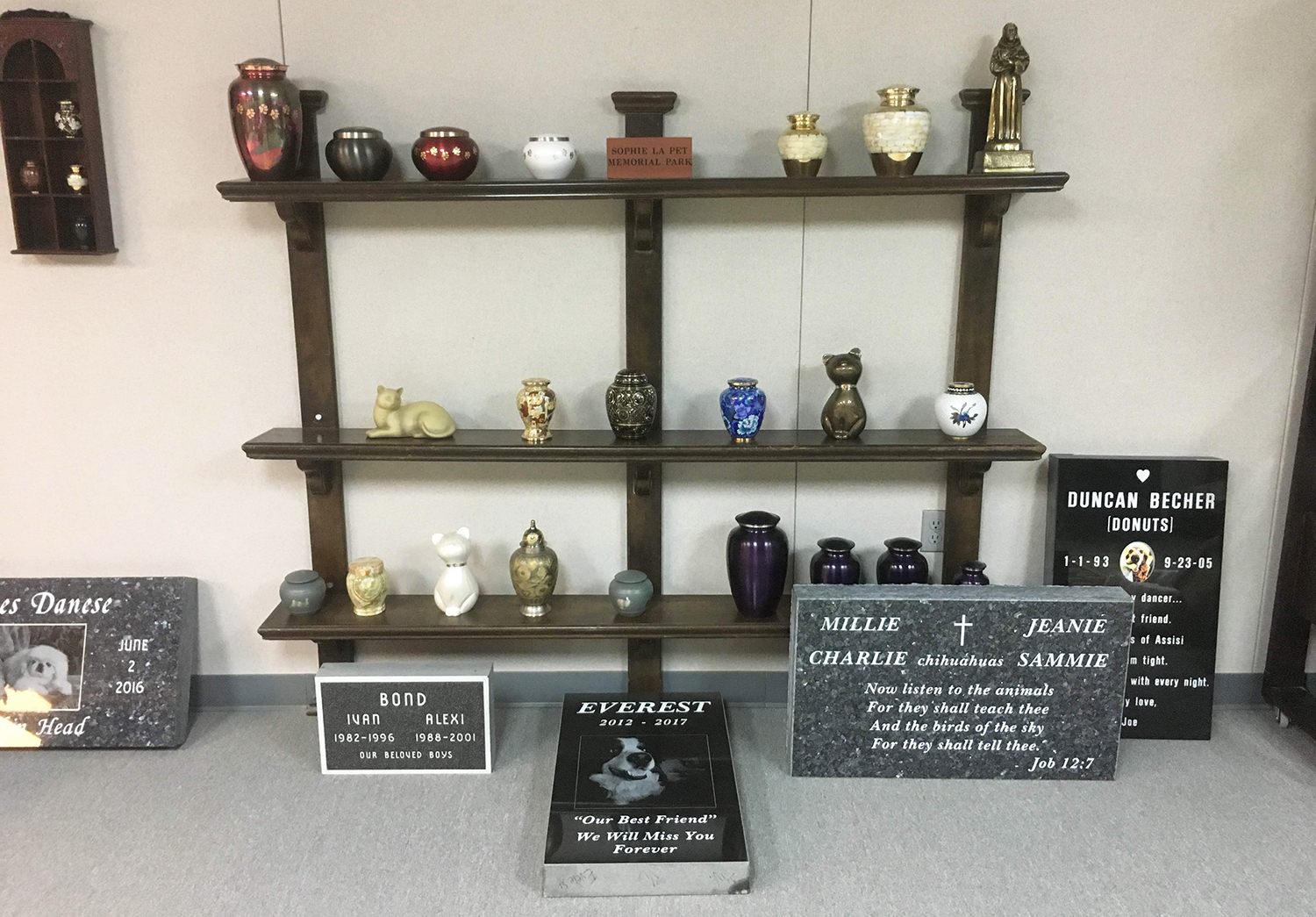
As we sit on the couch in the viewing room, where pets are groomed and presented in open caskets, Danese-Falk tears up talking about a client who recently lost her dog in a terrible accident. I ask if she ever thinks that it’s too painful to lose her animals and bury others’, if she’s ever decided she can’t own any more. “I say it every day,” she says, offering a small smile. “But it doesn’t work.”

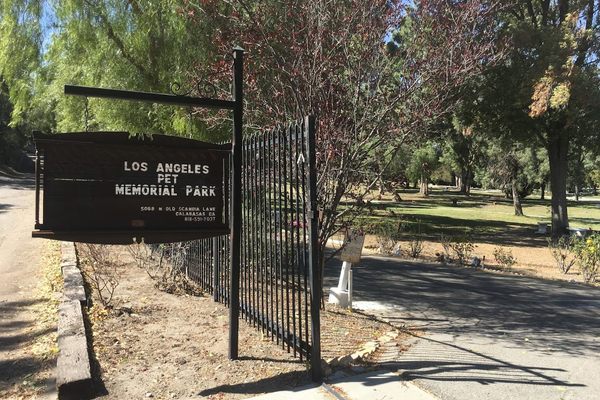

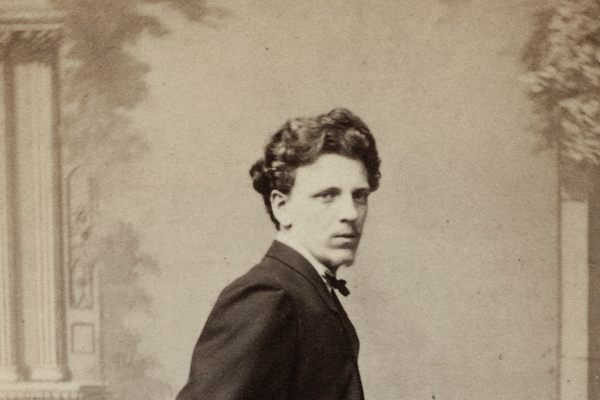



















Follow us on Twitter to get the latest on the world's hidden wonders.
Like us on Facebook to get the latest on the world's hidden wonders.
Follow us on Twitter Like us on Facebook